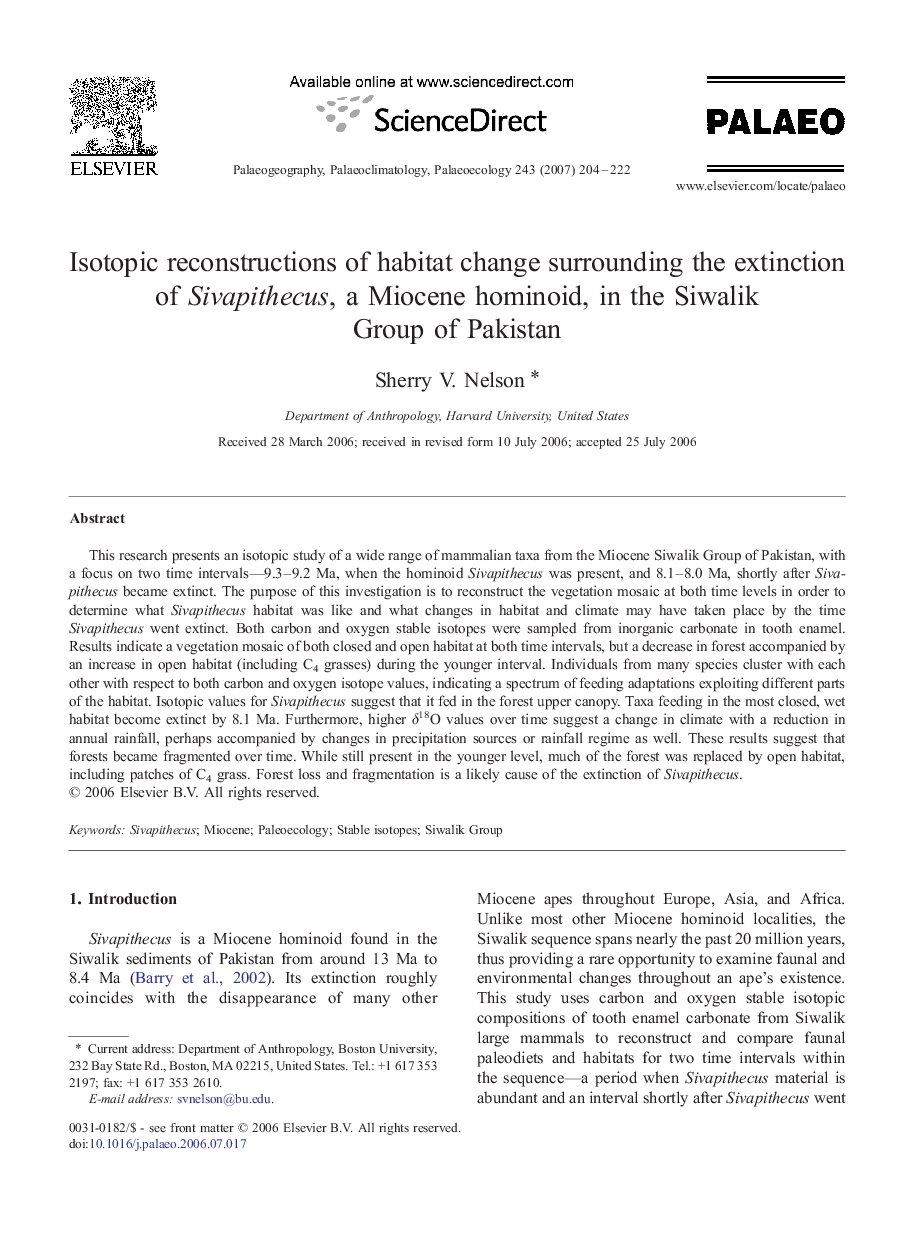| Article ID | Journal | Published Year | Pages | File Type |
|---|---|---|---|---|
| 4468995 | Palaeogeography, Palaeoclimatology, Palaeoecology | 2007 | 19 Pages |
This research presents an isotopic study of a wide range of mammalian taxa from the Miocene Siwalik Group of Pakistan, with a focus on two time intervals—9.3–9.2 Ma, when the hominoid Sivapithecus was present, and 8.1–8.0 Ma, shortly after Sivapithecus became extinct. The purpose of this investigation is to reconstruct the vegetation mosaic at both time levels in order to determine what Sivapithecus habitat was like and what changes in habitat and climate may have taken place by the time Sivapithecus went extinct. Both carbon and oxygen stable isotopes were sampled from inorganic carbonate in tooth enamel. Results indicate a vegetation mosaic of both closed and open habitat at both time intervals, but a decrease in forest accompanied by an increase in open habitat (including C4 grasses) during the younger interval. Individuals from many species cluster with each other with respect to both carbon and oxygen isotope values, indicating a spectrum of feeding adaptations exploiting different parts of the habitat. Isotopic values for Sivapithecus suggest that it fed in the forest upper canopy. Taxa feeding in the most closed, wet habitat become extinct by 8.1 Ma. Furthermore, higher δ18O values over time suggest a change in climate with a reduction in annual rainfall, perhaps accompanied by changes in precipitation sources or rainfall regime as well. These results suggest that forests became fragmented over time. While still present in the younger level, much of the forest was replaced by open habitat, including patches of C4 grass. Forest loss and fragmentation is a likely cause of the extinction of Sivapithecus.
